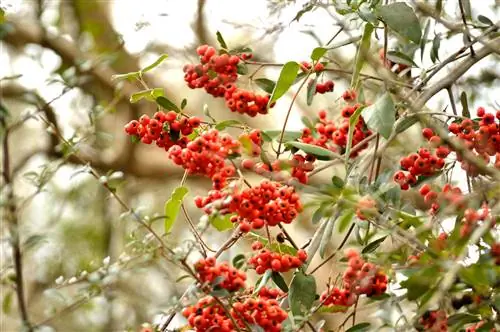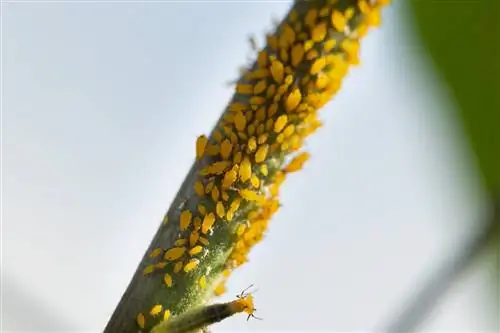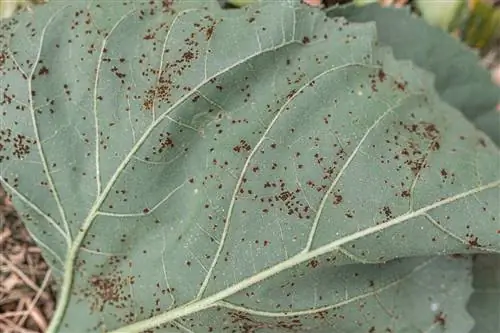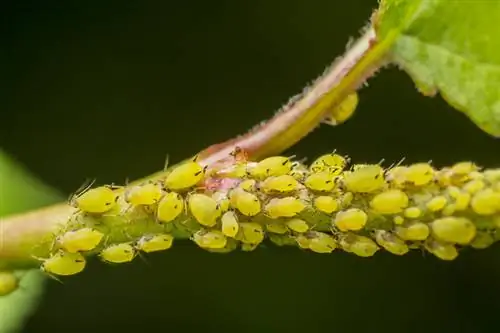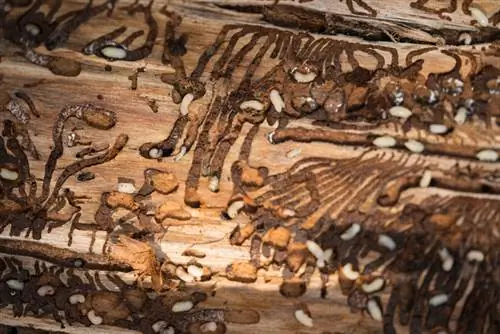- Author admin [email protected].
- Public 2023-12-16 16:46.
- Last modified 2025-01-23 11:22.
Fire blight is one of the most dangerous plant diseases. It is caused by the bacterium Erwinia amylovora. Infected plants lose vitality and die if appropriate control measures are not taken in time.
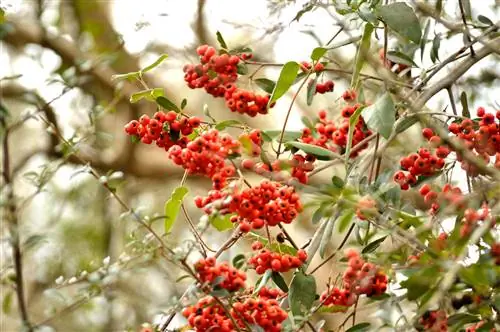
Can the firethorn get fireblight?
Since the firethorn belongs to the rose family, it is alsosusceptible to fire blight The pathogen overwinters on the affected bushes. This can lead to an epidemic-like spread, which leads to the death of an entire firethorn hedge within a short period of time.
How do I recognize fire blight on firethorn?
On the affected fire thorns (Pyracantha), theflowersandleavesbegin towither. However, they do not fall off, butdiscolorbecome characteristicblack-brown and look as if they have been burnt. Symptoms spread from the petiole. This causes the affected parts of the plant to curve downwards in an arc.
Another characteristic of this firethorn disease is the sticky, yellowish-white bacterial slime droplets that emerge from the branches. The infected areas of bark sink in and a clear boundary line between diseased and he althy wood becomes visible.
Why is the damage caused by this bacterium so severe?
The bacterium penetrates through stomata and cork pores (lenticels) andspreadsvia theconducting pathwaysfrom the roots to the shoot tipsoff. Theexcretionsof the bacteriainhibitthewater transport,so that initially leaves and flowers from the Supply will be cut off.
Since the disease also affects the flowers of the firethorn, the nectar-collecting bees and insects ensure that the bacterium spreads further. In addition, the bacterial slime that is spread over large areas by wind, raindrops and animals can lead to an epidemic-like spread.
How can I fight fire blight at Firethorn?
Unfortunately, there is currentlyno approved preparation for home and allotment gardens against fire blight.
- If only individual shoots are affected, cut the firethorn back deep into the he althy wood. Seal the wound carefully so that the pathogen does not find a new entry point.
- Dispose of infected plant parts with household waste or burn them.
- Thoroughly disinfect the cutting tools used.
- Heavily infested firethorn bushes must be completely removed.
How can I successfully prevent fire blight?
SinceRosaceaelike firethorn cannot be completely protected from infection, you should only cultivateresistant varieties.
- Also check all bushes regularly for symptoms.
- Fight leaf-sucking insects with biological means.
- Yeast preparations that are effective against fire blight have an effect of over 70 percent. These are applied in spring and prevent the bacteria from penetrating the plant via the flowers.
Is fire blight a reportable plant disease?
Because of the great damage that fire blight can cause in commercial fruit production, you must report theInfestationto the responsibleDistrict Officeor theReport State Institute for Agriculture. The authorities' employees will also coordinate further action with you.
Tip
Many plants are at risk from fire blight
Fire blight is a bacterial plant disease with a very wide range of host plants. In addition to firethorn, hawthorn and hawthorn, cultivated and wild apples, pears and serviceberries, quince, rowan and mulberry as well as cotoneaster are also at risk. If you suspect that your firethorn may be affected by fire blight, you should also carefully examine these trees for symptoms.

